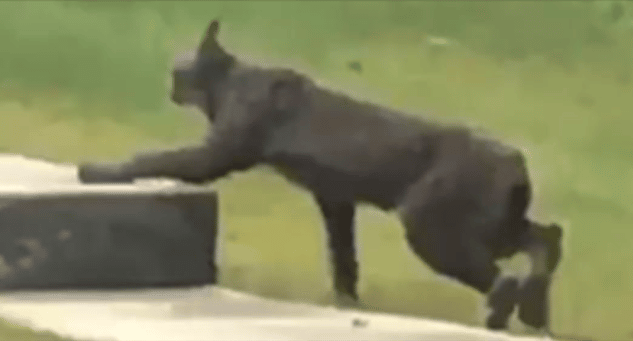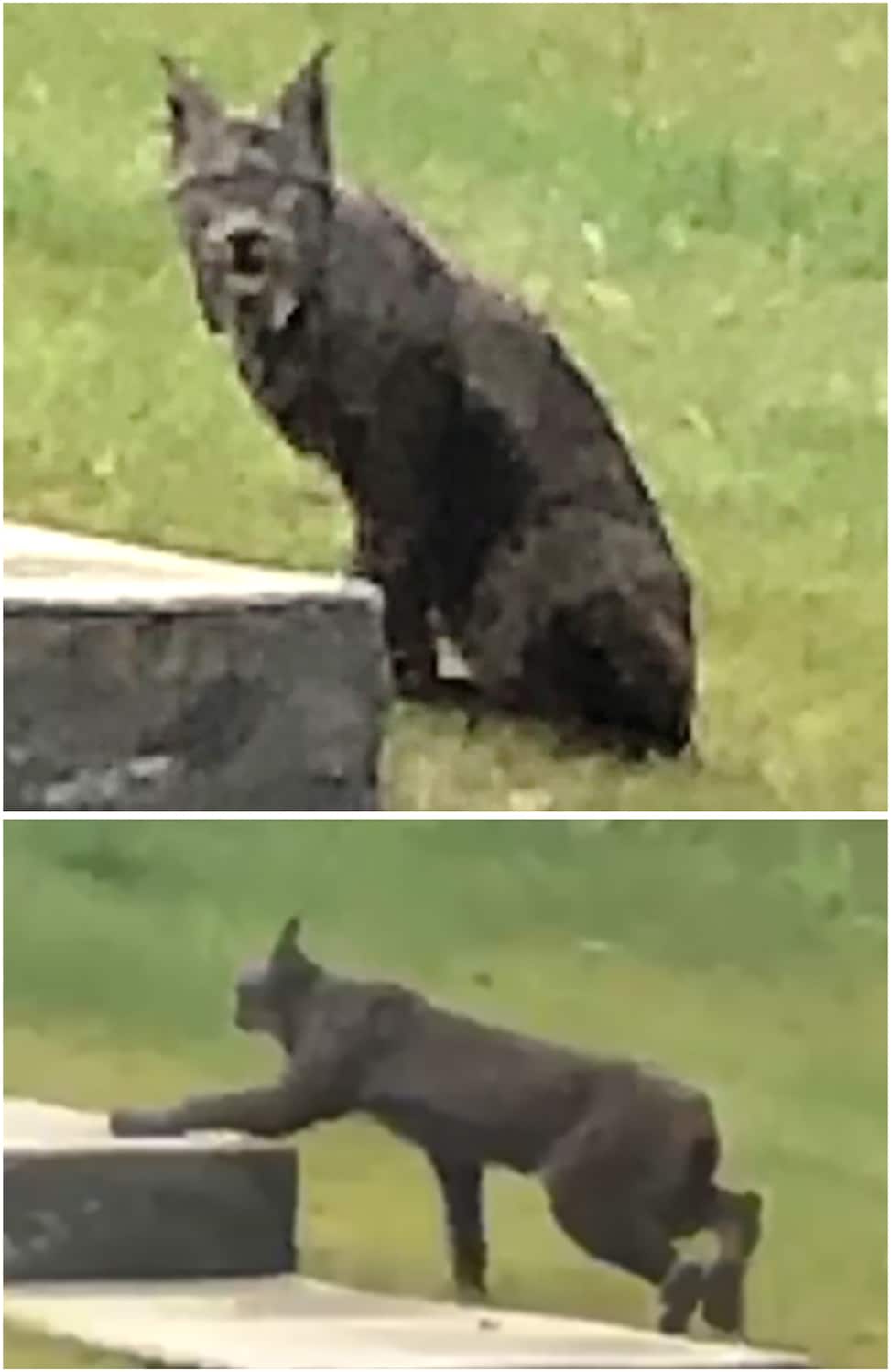Because they are so hard to find, no one has ever taken a picture of a black lynx in Canada. Up until now.
It has never been done before, but a photo of a Canada lynx (Lynx canadensis) with black fur has been taken. This is a very rare thing to see.
Thomas Jung, a researcher at the University of Alberta, was in a residential neighborhood in the Yukon, Canada when he was able to film the animal with his phone. Even though there was noise from people going about their business and a dog barking nearby, the lynx seemed to be calm.
Professionals looked at the video and decided that it does not show a bobcat but rather a Canadian lynx (Lynx rufus). Jung said in a statement,
It had a black coat containing whitish gray guard hairs throughout, as well as whitish gray hairs in the facial ruff and the rostrum and dorsal regions.
Melanism, which is when the body makes more of the pigment melanin, is fairly common in cats. About one-third of all felid species have been reported to have a melanistic polymorph. Melanism means that the body makes more melanin than it used to. For example, black panthers are just leopards or jaguars whose fur has turned black. These kinds of genetic changes can be good for the animal (called adaptive) or bad for the animal’s health (called deleterious, or maladaptive).
In the genus Lynx, color polymorphisms have only been seen a few times. Jung says that losing camouflage when hunting in the winter is likely to be bad for the lynx, even though no one knows what the adaptive value of melanism in lynx is. This means that the animal’s dark coat could make it harder for it to find hares in a snowy landscape when it is hunting for them. Lepus americanus snowshoe hares are the Canada lynx’s main food source in the northern part of their range, which is mostly Canada and Alaska but also includes a few states in the northern United States.










